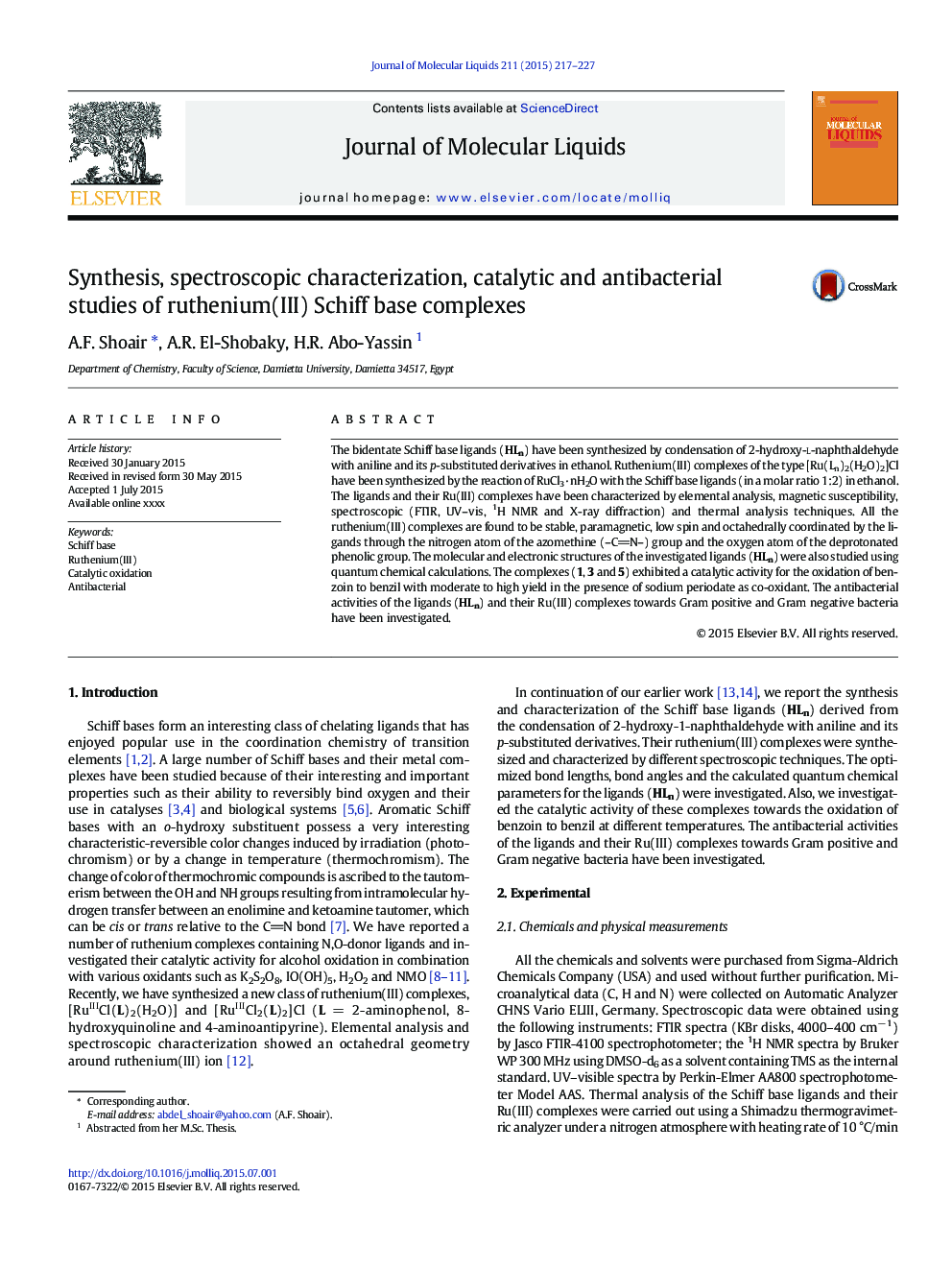| Article ID | Journal | Published Year | Pages | File Type |
|---|---|---|---|---|
| 5410628 | Journal of Molecular Liquids | 2015 | 11 Pages |
Abstract
The bidentate Schiff base ligands (HLn) have been synthesized by condensation of 2-hydroxy-l-naphthaldehyde with aniline and its p-substituted derivatives in ethanol. Ruthenium(III) complexes of the type [Ru(Ln)2(H2O)2]Cl have been synthesized by the reaction of RuCl3·nH2O with the Schiff base ligands (in a molar ratio 1:2) in ethanol. The ligands and their Ru(III) complexes have been characterized by elemental analysis, magnetic susceptibility, spectroscopic (FTIR, UV-vis, 1H NMR and X-ray diffraction) and thermal analysis techniques. All the ruthenium(III) complexes are found to be stable, paramagnetic, low spin and octahedrally coordinated by the ligands through the nitrogen atom of the azomethine (-CN-) group and the oxygen atom of the deprotonated phenolic group. The molecular and electronic structures of the investigated ligands (HLn) were also studied using quantum chemical calculations. The complexes (1, 3 and 5) exhibited a catalytic activity for the oxidation of benzoin to benzil with moderate to high yield in the presence of sodium periodate as co-oxidant. The antibacterial activities of the ligands (HLn) and their Ru(III) complexes towards Gram positive and Gram negative bacteria have been investigated.
Related Topics
Physical Sciences and Engineering
Chemistry
Physical and Theoretical Chemistry
Authors
A.F. Shoair, A.R. El-Shobaky, H.R. Abo-Yassin,
